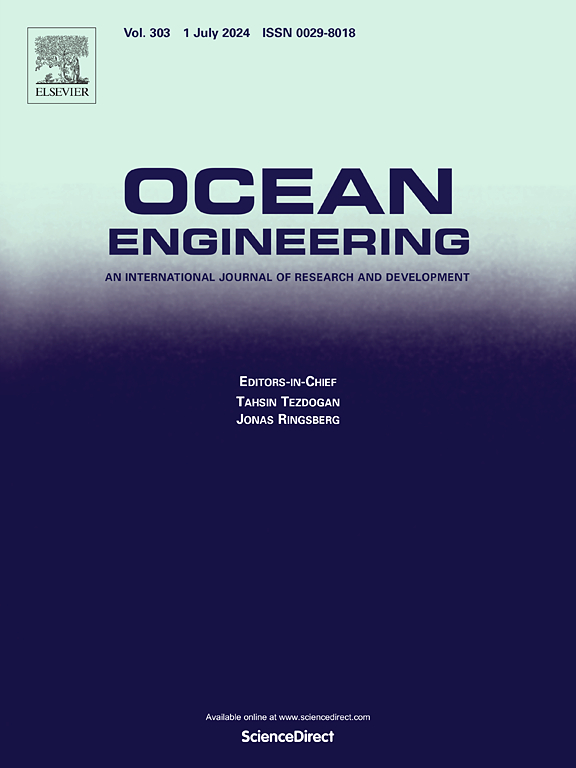动态安装鱼雷锚头嵌入深度的实验研究
IF 5.5
2区 工程技术
Q1 ENGINEERING, CIVIL
引用次数: 0
摘要
在深水中,动态安装鱼雷锚是最简单、最经济、最省时的现代锚固技术。在该技术中,目标尖端嵌入深度估计是设计阶段的关键任务。这种尖端嵌入深度取决于诸如长径比、鳍比、锚压舱物重量、落差高度、尖端形状和海底不排水剪切强度等因素。其中,所采用的叶顶几何形状的配置起着重要的作用,但对其进行的实验或数值研究有限。现有的理论模型没有预测不同的尖端形状的影响,这是土壤分离过程中的一个主要因素。由于尖端轮廓的变化,侵彻过程变得复杂,在尖端嵌入深度预测模型中所考虑的参数选择变得可疑。因此,本实验计划的目的是在不同的试验台上对仪器化模型锚进行一系列1g跌落试验,并采用不同的尖端配置(锥形- 30°,45°和60°,椭圆形,椭圆形和半球)。在此过程中,还考察了不同锚杆的尖端嵌入过程。对于具有标准承载力系数的60°锥端锚模型,本文的实验结果与基于力平衡的理论模型吻合较好,而对于其他形状的端锚模型则存在差异。为了解决这一差异,在对现场条件下采用的其他叶顶型进行试验研究的基础上,估计了一个称为叶顶性能因子的系数。此外,还对参数化研究进行了扩展,实验研究了锚杆压舱重量效应、落差高度效应、翅片布置效应和不排水抗剪强度效应。本文章由计算机程序翻译,如有差异,请以英文原文为准。
Tip embedment depth of dynamically installed torpedo anchor: An experimental approach
In deep waters, dynamically installed torpedo anchors are the simplest, most economical and less time-consuming modern anchoring technique. In this technique, the target tip embedment depth estimation is an essential task in the design stage. This tip embedment depth depends on factors like aspect ratio, fin ratio, anchor ballast weight, drop height, tip shape and undrained shear strength of the underlying sea floor. Amongst these, the configuration of the tip geometry shape adopted plays a significant role, but only limited experimental or numerical studies were performed on these. The existing theoretical models do not predict the influence of the various tip shapes, which is a prime factor in the soil separation process. Due to the change in the tip profile, the penetration process becomes complex, and the choice of parameters considered in the tip embedment depth prediction models becomes dubious. Thus, the objective of the present experimental program is to run a series of 1g drop tests of instrumented model anchors in various test beds with the different tip configurations (conical - 30°, 45° and 60°, elliptical, ogive and hemisphere). In the process, the tip embedment process of these different anchors is also examined. The present experimental results match reasonably well with the theoretical model, based on the force equilibrium, for 60° conical tip anchor models with standard bearing capacity factor, whereas discrepancy appears for other kinds of tip shapes. In order to resolve this discrepancy, a coefficient called tip performance factor is estimated based on the experimental study for other tip profiles to be adopted in field conditions. Additionally, the parametric study was also extended experimentally to study the anchor ballast weight effect, drop height effect, fin arrangement effect and undrained shear strength effect.
求助全文
通过发布文献求助,成功后即可免费获取论文全文。
去求助
来源期刊

Ocean Engineering
工程技术-工程:大洋
CiteScore
7.30
自引率
34.00%
发文量
2379
审稿时长
8.1 months
期刊介绍:
Ocean Engineering provides a medium for the publication of original research and development work in the field of ocean engineering. Ocean Engineering seeks papers in the following topics.
 求助内容:
求助内容: 应助结果提醒方式:
应助结果提醒方式:


